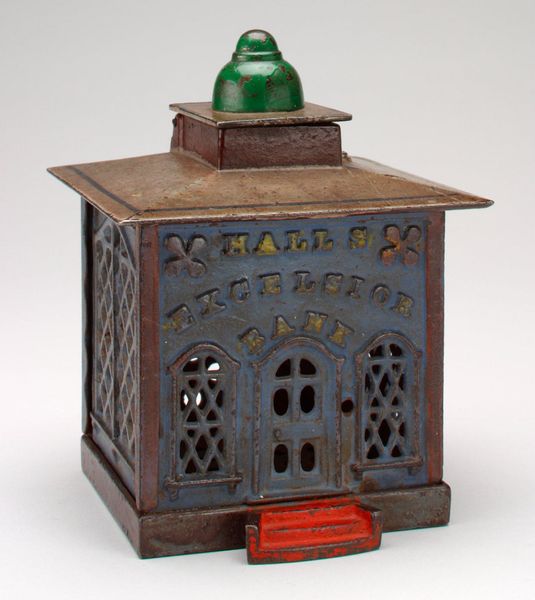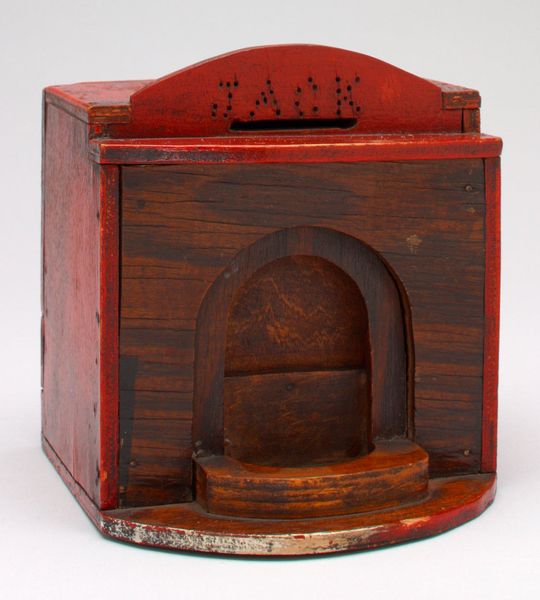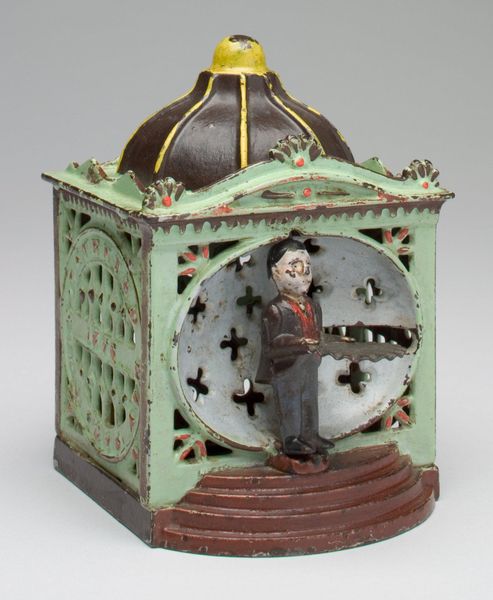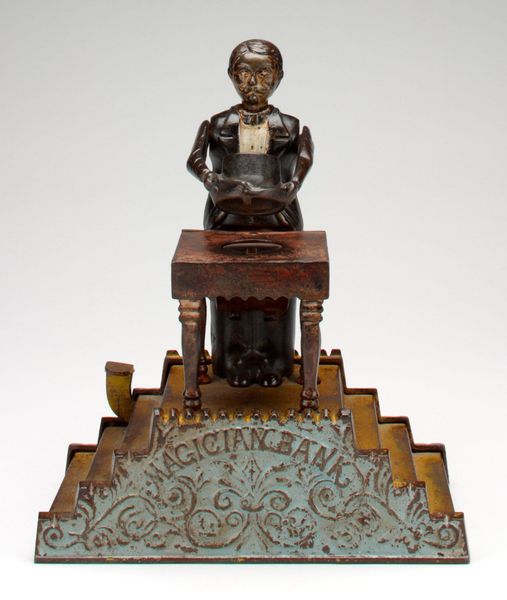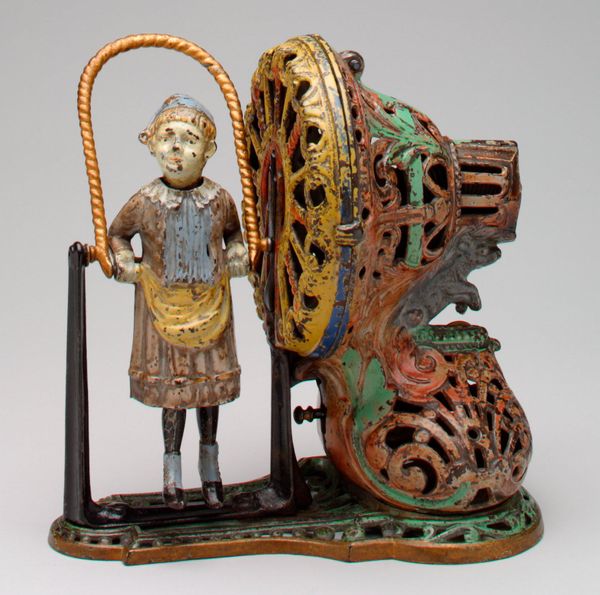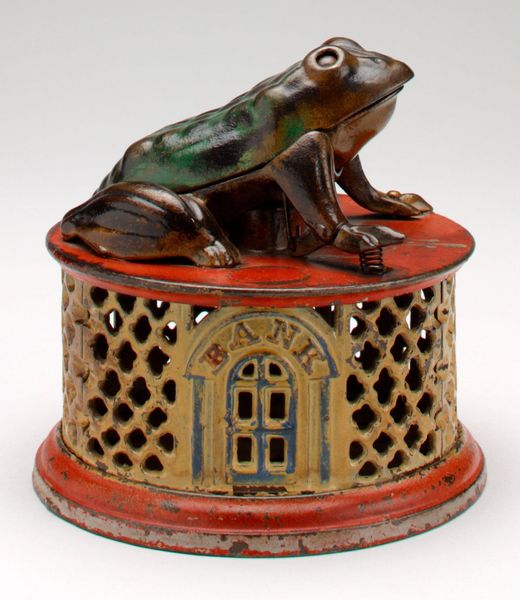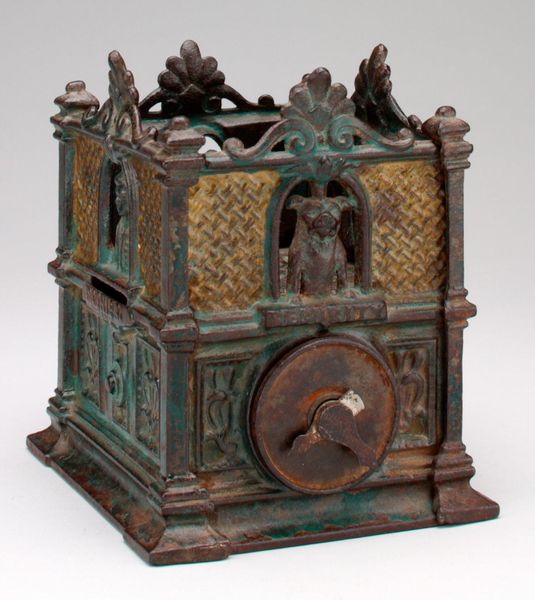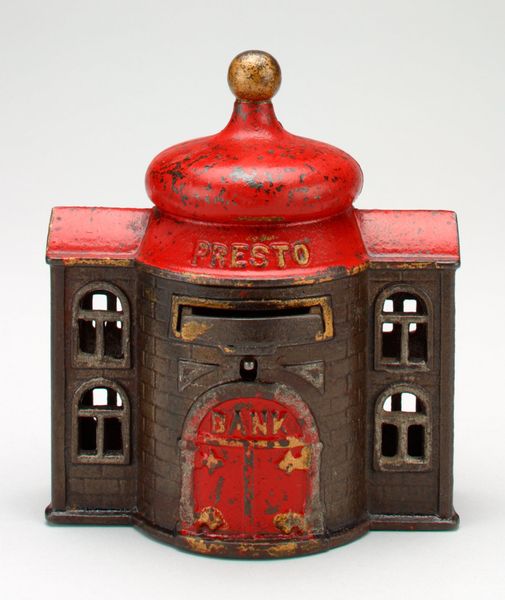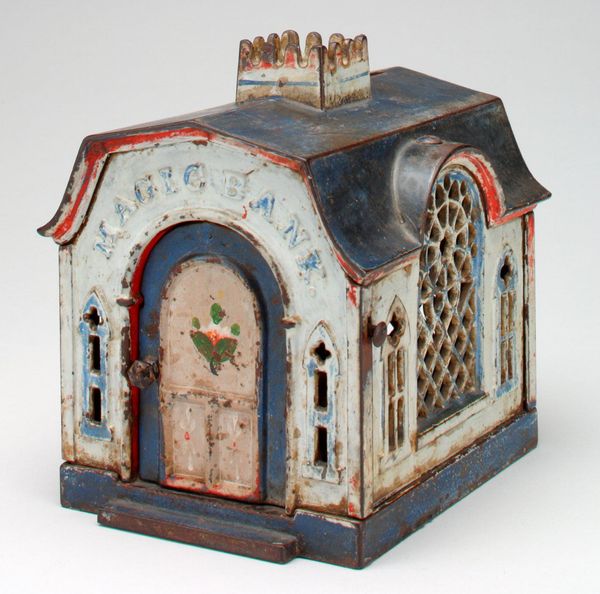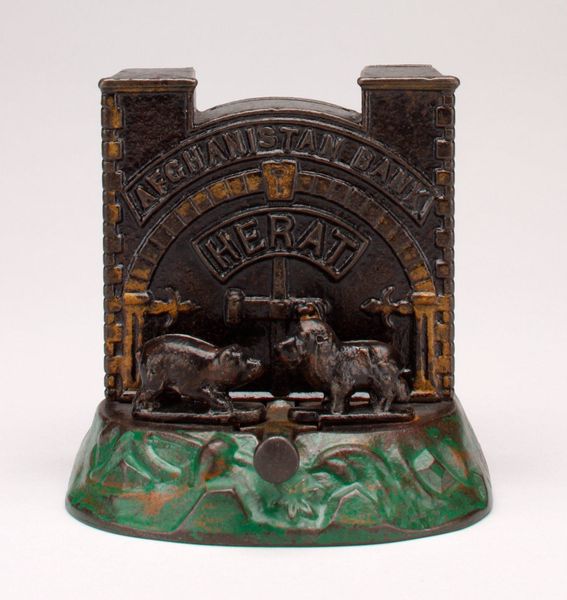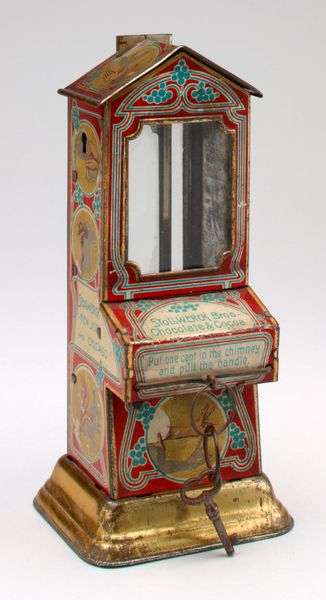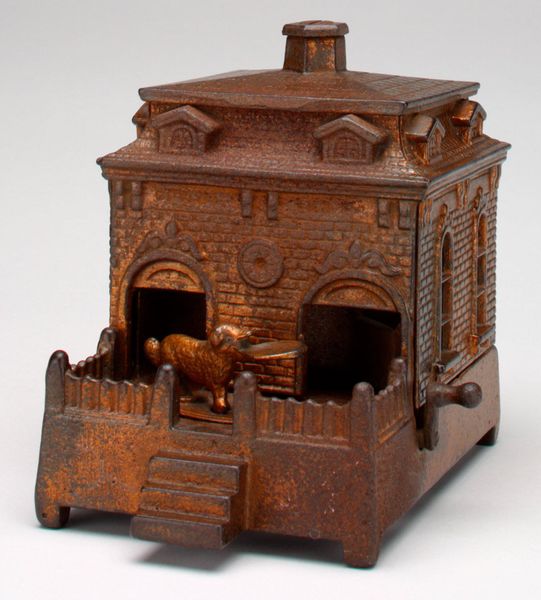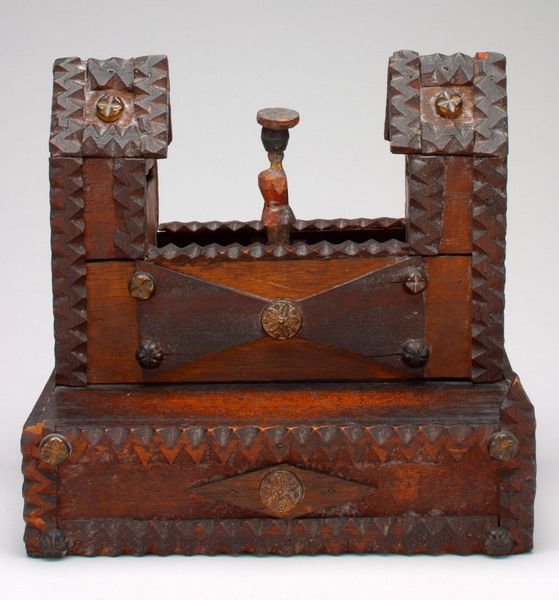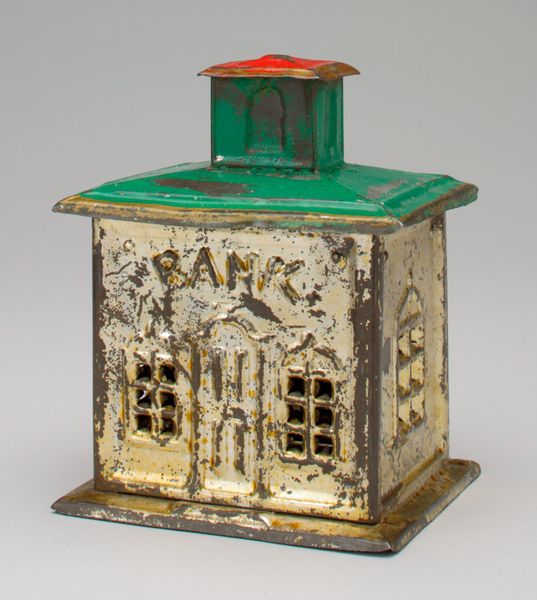
metal, bronze, sculpture
#
metal
#
sculpture
#
bronze
#
figuration
#
sculpture
#
decorative-art
#
miniature
#
statue
Dimensions: 5 3/8 x 6 x 5 7/8 in. (13.65 x 15.24 x 14.92 cm)
Copyright: Public Domain
Curator: What strikes you most about this peculiar object? It’s a mechanical bank, circa 1880, crafted by Louis Kyser. Editor: There’s a unsettling charm here. I'm immediately caught by its quaint aesthetic. The palette of muted reds, greens, and the figure rendered in deep black… it’s simultaneously childlike and, well, something else. Curator: Precisely. The figure—a Black child reading within a faux-oriental pavilion—encapsulates complex layers of meaning. Notice the words inscribed above him, "JOLLY N---ER BANK." How do you unpack that? Editor: It’s blatant racism, of course, typical of the minstrel show era. And using a child to elicit savings feels manipulative, tapping into societal attitudes about race and childhood. Were these banks meant to normalize and perpetuate stereotypes from an early age? Curator: Indeed. Mechanical banks often reflected prevailing cultural sentiments. In this case, it’s the racial caricature that transforms what might otherwise be an innocent toy into something insidious. Consider also how it likely functioned; the coin triggers a performance. Editor: Right, it becomes an automated reinforcement of stereotype, where every deposit reenacts and rewards the racist image. Does the act of banking—something ostensibly forward-looking—become implicated in reinforcing outdated and damaging views? Curator: That's precisely the discomfort. By saving with this bank, children were arguably taught more than thrift; they absorbed cultural prejudices. This wasn’t simply decoration but a social instrument shaping thought. Editor: So the playful design and diminutive size camouflage a much darker reality about attitudes towards race in late 19th-century America. A grim artifact dressed up as a playful learning tool. It really speaks volumes. Curator: Absolutely, it forces us to consider how seemingly harmless objects can participate in much larger social and political narratives. Editor: Thank you, this conversation changed how I engage with decorative art. Its utility shouldn’t obfuscate a reading into cultural memory.
Comments
No comments
Be the first to comment and join the conversation on the ultimate creative platform.
